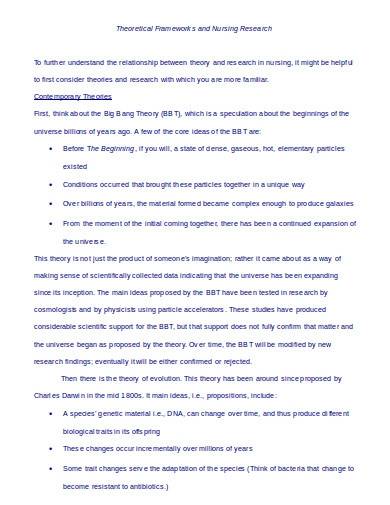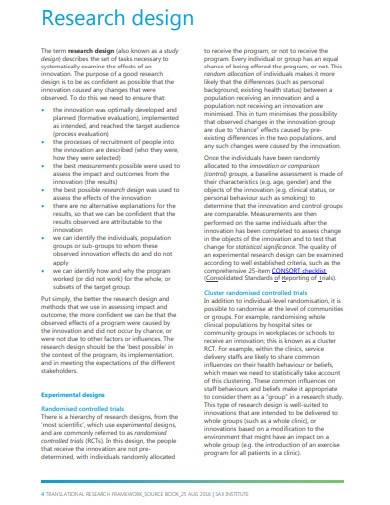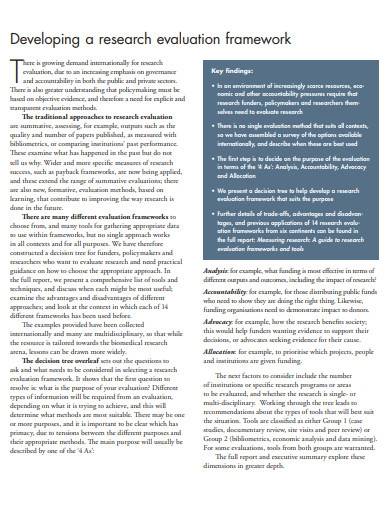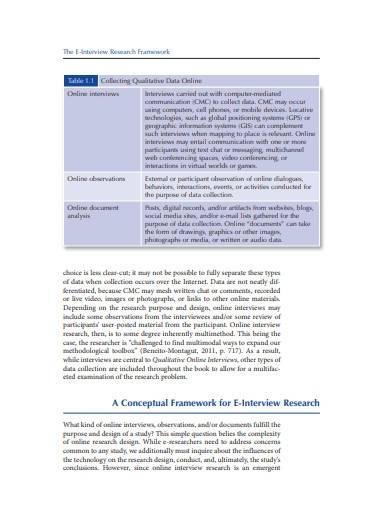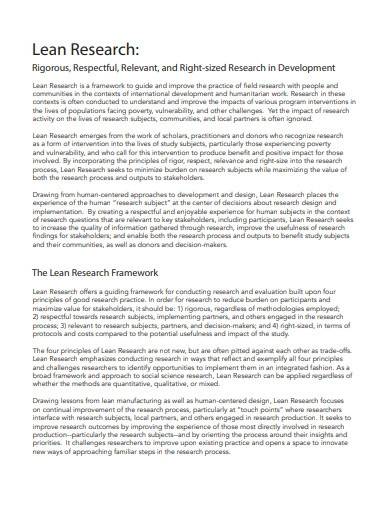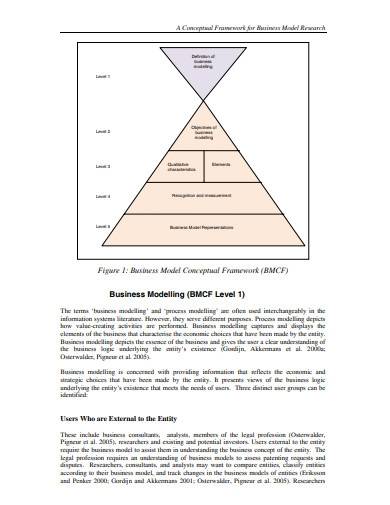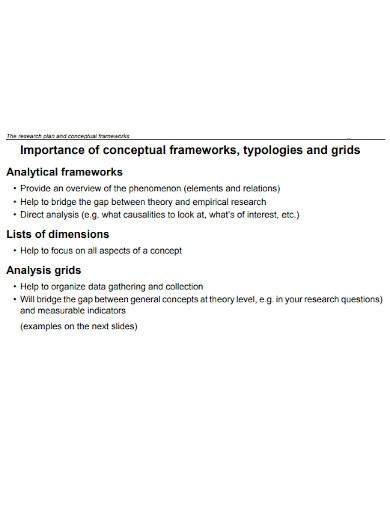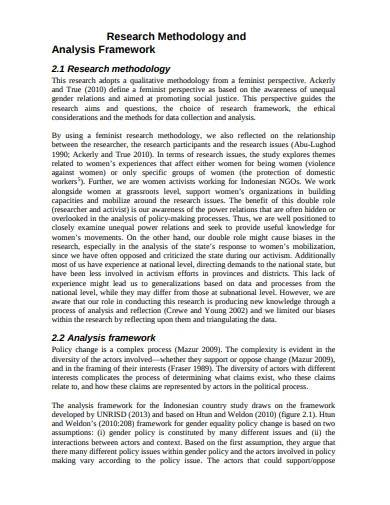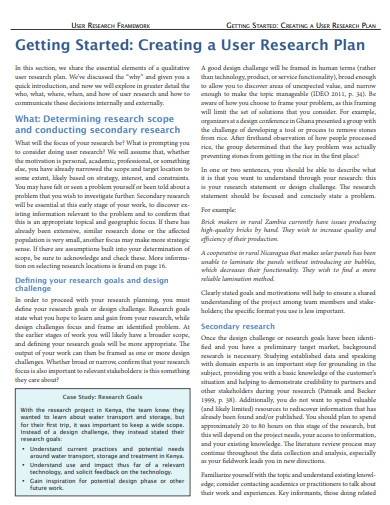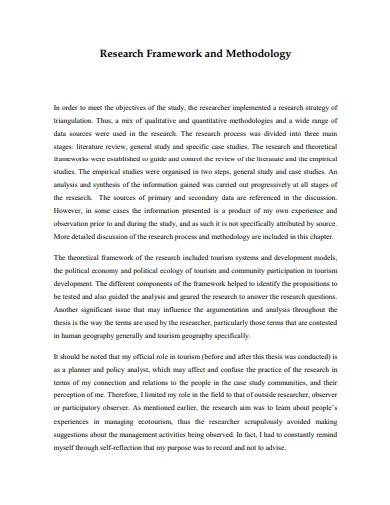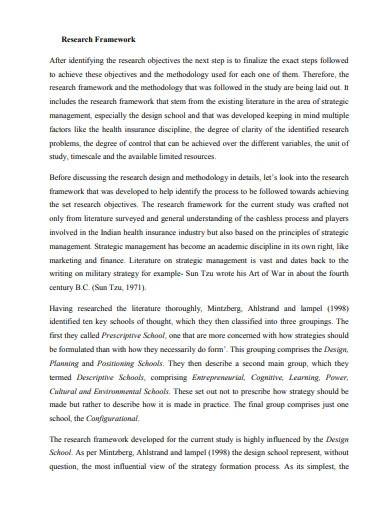In research, the research design statement for its framework aligns the essence of the research paper or study to provide insights that the writer needs, whether they are solving a complex organizational problem or contributing to a theory. The framework provides the writer with a structure to manage the development of an aligned and consistent research design. With a framework, an individual can effectively build or construct something, and is often used in different fields, from web development proposals to quantitative research and qualitative research proposal.
FREE 10+ Research Framework Samples & Templates
1. Research Framework Template
2. Research Design Framework
3. Research Evaluation Framework
4. E-Interview Research Framework Template
5. Lean Research Framework
6. Research Conceptual Framework
7. Research Framework Overview Template
8. Research Methodology & Analysis Framework
9. User Research Framework Template
10. Research Framework & Methodology
11. Sample Research Framework Template
What is a Research Framework?
A research framework is the accurate representation of the outline or layout of a research project proposal or development plan. With a framework, researchers or writers can identify the important aspects or critical areas of the subject matter they are studying about. It also enables them to determine the appropriate and relevant research objectives and questions that will help them in the development of their research.
How to Use a Research Framework
To provide a guideline or a roadmap for research activities, a research framework is used by researchers to guide them through relevant conversations that surround their research as well as to determine the appropriate approach and method to use in what situation. A framework not only helps in planning research activities but also enables writers to prioritize the effort of their research team and emphasizes how to effectively spend their time.
Step 1: Write Down Your Observations
With your established framework, take time to observe your research surroundings. You can write down notes of various indicators that can reveal the important factors of your research. You may also notice unusual activities that will require you further analysis as well as connections between matters that your existing information did not cover.
Step 2: Make Your Research Questions
After taking notes of essential observations, develop your research questions. In this step, make sure that the questions you’ve formulated will grab the attention and interest of your audience. However, you also have to make sure that your questions are answerable with the given resources and time.
Step 3: Determine the Most Effective Method
After formulating your research questions and creating the objectives of the research study plan, you can now determine the method you will use to collect relevant data. Some of the research designs you can use include a case study, open-label, cross-sectional, parallel design, and a case-control design.
Step 4: Analyze the Collected Data
Once you have collected all relevant data and information, you can utilize statistical analysis to think of the best solution and conclusion for the research. After you have concluded your research paper, you can now present your findings to your target audience.
FAQs
What are the benefits of utilizing research frameworks?
With research frameworks, you can obtain timely knowledge, whether you are performing a study for a marketing research proposal or a nursing research proposal. You can also determine the gaps between data, and develop a research action plan or strategy.
What are the components of a research design framework?
There are nine components of a research design framework which are the problem statement, purpose statement, research questions, conceptual framework, literature review, overall approach, data collection, data analysis, and conclusions.
What is a theoretical framework?
A theoretical framework refers to the structure of a research study that supports a theory. It consists of concepts with their corresponding definitions as well as the theories used for a certain study and their understanding that is relevant to the topic of the research paper.
A research framework is the structure of the outline of a research paper that the researcher or writer follows to ensure the development and progress of their study on the right path. This framework helps researchers to identify the areas they need to conduct further research as well as enables them to develop relevant questions and objectives for their study.
Related Posts
FREE 10+ Quantitative Research Report Samples & Templates in ...
FREE 8+ Market Research Samplesin PDF MS Words | Apple Pages
FREE 7+ Sample Research Reports in PDF
FREE 11+ Sample Research Plan Templates in MS Word PDF
FREE 11+ Research Plan Samples in PDF MS Word
FREE 14+ Sample Research Proposals in PDF MS Word
FREE 7+ Sample Research Reports in PDF
FREE 8+ Table of Content Templates in MS Word
FREE 33+ Action Plan Samples in PDF
FREE 9+ Quantitative Research Samples & Templates in MS Word ...
Sample Case Analysis Template
FREE 10+ Liquidity Risk Management Samples in PDF DOC
Sample Consulting Report
FREE 8+ Terms and Conditions Samples in PDF MS Word
FREE 20+ Research Paper Outlines in PDF MS Word

